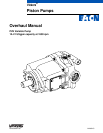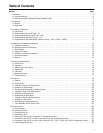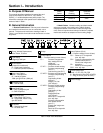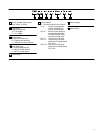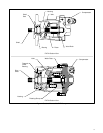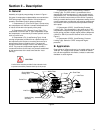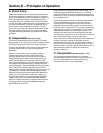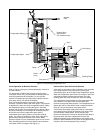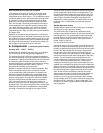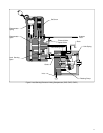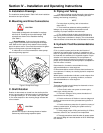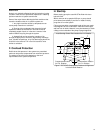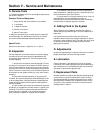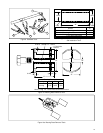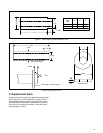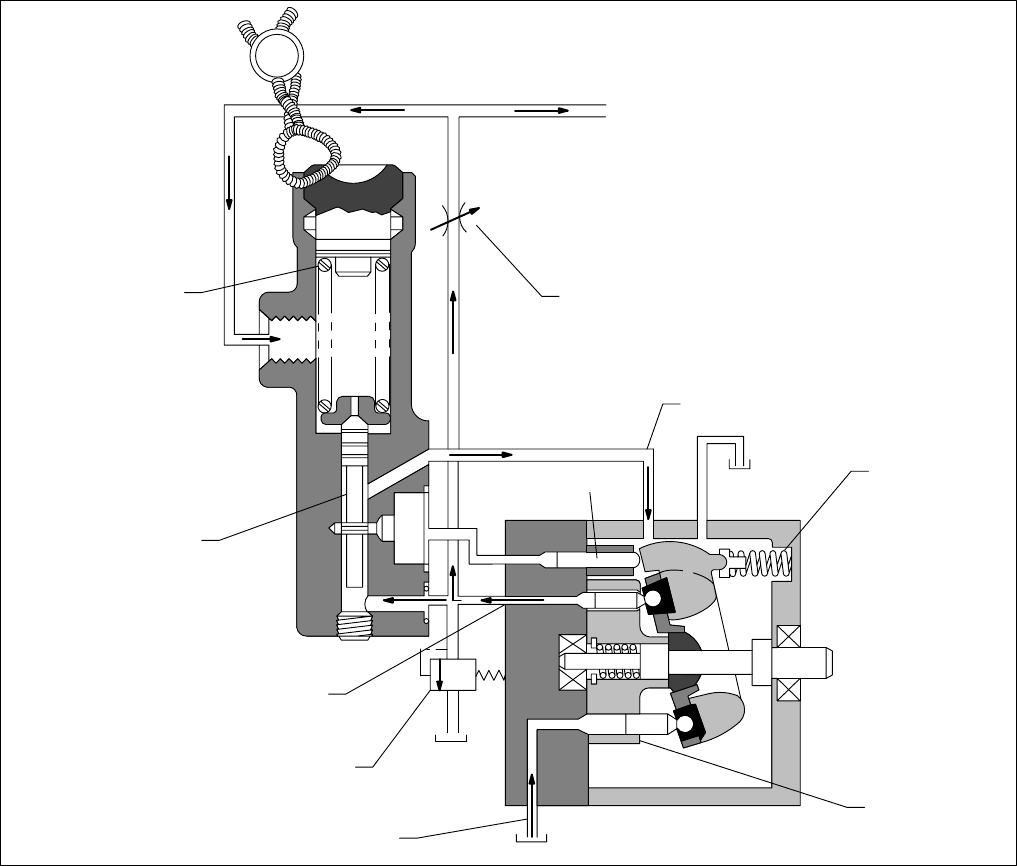
9
Figure 4. Load Sensing Compensator (CV).
Compensator Spring
Drain
Compensator Spool
Yoke Stroking Piston
Rotating Group
Yoke Spring
Inlet
Outlet
Actuator
Load
External Valve
Spool Orifice
(nP-Pressure Drop)
Relief
Valve
Circuit Operation At Minimum Pressure
Refer to Figure 4 during the following description. Assume a
no load condition.
The pump load consists of the pressure drop across the
valve spool orifice (nP), plus the pressure developed by the
work being performed at the actuator. (In this case the
actuator is unloaded and only the pressure drop across the
valve spool orifice (nP) will be considered.)
Flow is restricted through the valve spool orifice and
develops a pressure at the outlet of the pump. This pressure
is applied to the lower end of the compensator spool. Initially,
the compensator spring is holding the spool in the down
position and the yoke is at maximum delivery position. When
the pump is started, the increasing flow increases pressure
at the lower end of the compensator spool and the
compensator spool opens pressure to the yoke stroking
piston. The yoke then strokes to a lower flow, lowering the
pressure drop across the external valve orifice. When
pressure reaches nP, the compensator spool will null. At this
time, the stroking piston will remain stable until the external
valve spool orifice is changed. (See Figure 4.)
External Valve Spool Orifice Size Reduced
If the external valve spool orifice is reduced in size, pressure
at the pump outlet will rise proportionally causing the
compensator spool to move against the compensator spring.
When the compensator spool moves far enough to open the
yoke stroking piston to pump outlet pressure, the yoke
stroking piston will move the yoke to a lower flow setting.
The compensator senses pressure at the downstream side
of the external valve spool orifice and compares this
pressure to the pump outlet pressure. The compensator then
adjusts the yoke to a flow which holds a constant pressure
drop (nP) across the external valve spool orifice.
The pressure developed at the pump outlet is a summation
of the pressure drop across the external valve spool orifice
and the actuator load pressure. As the actuator load
pressure increases, the increase is reflected directly back to
the pump outlet. Since the compensator monitors the
difference between pump outlet pressure and actuator load
pressure, and this difference (nP) does not change with load
variations, flow from the pump will stay constant.



